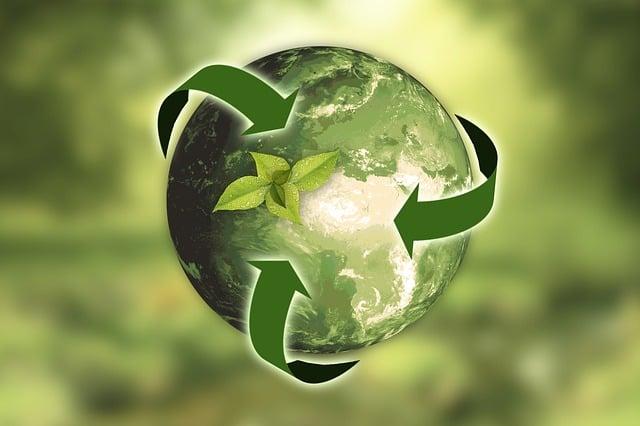- Introduction
- E-Waste Management
- Technological Advancements
- Benefits of E-Waste Recycling
- Challenges and Future Outlook
- Conclusion
- FAQs
Introduction
Electronic waste, commonly referred to as e-waste, has become a pressing global issue as technology evolves at a rapid pace. The management, recycling, and disposal of electronic devices have garnered significant attention due to the environmental and health hazards associated with improper handling. This article delves into the latest advances in e-waste recycling, highlighting the benefits, challenges, and future prospects in this critical field.
E-Waste Management

(Image: Pixabay/@khoinguyenfoto)
The primary objective of e-waste management is to minimize the adverse impact of discarded electronics on the environment and human health. Traditional methods of disposing of e-waste, such as landfilling or incineration, are no longer sustainable due to the harmful substances present in electronic devices. As a result, there has been a shift towards adopting more environmentally friendly practices like recycling and refurbishing.
E-waste management involves the collection, sorting, dismantling, and processing of electronic devices to recover valuable materials and reduce the volume of waste sent to landfills. Proper recycling of e-waste not only conserves natural resources but also helps prevent the release of toxic chemicals into the environment, promoting a circular economy model.
Government regulations and industry initiatives play a crucial role in shaping e-waste management practices globally. Many countries have established e-waste recycling programs and implemented stringent guidelines to ensure responsible disposal and recycling of electronic products.
Technological Advancements

(Image: Pixabay/@anaterate)
Advancements in technology have revolutionized the e-waste recycling process, enabling more efficient and sustainable solutions for handling electronic waste. Innovations such as automated sorting systems, shredding machines, and extraction techniques have streamlined the recycling workflow, leading to higher recovery rates of valuable materials like metals, plastics, and glass.
The introduction of specialized e-waste recycling facilities equipped with advanced machinery has significantly enhanced the recovery and recycling capabilities of electronic devices. These facilities employ sophisticated processes to extract and separate different components of e-waste, facilitating the reuse of critical resources and reducing the environmental footprint of electronic waste disposal.
Furthermore, emerging technologies like artificial intelligence and machine learning are being integrated into e-waste recycling practices to optimize operations, improve material identification, and enhance resource efficiency. Such technological innovations are instrumental in tackling the growing challenges associated with e-waste management on a global scale.
Benefits of E-Waste Recycling

(Image: Pixabay/@anncapictures)
E-waste recycling offers a myriad of environmental, social, and economic benefits that contribute to a more sustainable and circular approach to managing electronic waste. By recovering valuable materials from discarded electronics, recycling minimizes the need for extracting raw resources, conserves energy, and reduces carbon emissions associated with manufacturing new products.
In addition to environmental advantages, e-waste recycling also creates employment opportunities, promotes innovation in recycling technologies, and fosters a culture of waste reduction and resource conservation. When electronic devices are responsibly recycled, their components can be repurposed for the production of new electronics or other applications, closing the loop on resource utilization.
Moreover, e-waste recycling helps prevent the accumulation of toxic substances in landfills and reduces the environmental impact of electronic waste on ecosystems and communities. By diverting e-waste from conventional disposal methods, recycling ensures that valuable resources are recovered and reused in a sustainable manner, aligning with the principles of a circular economy.
Challenges and Future Outlook

(Image: Pixabay/@analogicus)
Despite the progress made in e-waste recycling technologies and practices, several challenges persist in achieving a truly sustainable and efficient electronic waste management system. One of the main hurdles is the lack of standardized regulations and enforcement mechanisms across different regions, leading to inconsistencies in e-waste handling and processing.
Additionally, the rapidly evolving nature of electronic devices poses a challenge in keeping up with the ever-increasing volume and complexity of e-waste generated globally. Ensuring the safe disposal and recycling of advanced electronics, including smartphones, laptops, and tablets, requires continuous innovation and collaboration between industry stakeholders, policymakers, and consumers.
Looking ahead, the future of e-waste recycling holds promise with ongoing research and development efforts focused on enhancing recycling technologies, increasing resource recovery rates, and promoting sustainable consumption patterns. By addressing the existing challenges and investing in innovative solutions, the e-waste recycling industry can pave the way for a more environmentally conscious and resource-efficient future.
Conclusion
The advancement of e-waste recycling technologies represents a crucial step towards mitigating the environmental impact of electronic waste and fostering a sustainable approach to managing discarded electronics. By harnessing technological innovations, implementing proper e-waste management strategies, and raising awareness about the importance of responsible recycling, we can work towards building a more resilient and eco-friendly electronic waste ecosystem.
FAQs
How can I recycle my old electronic devices?
You can recycle your old electronic devices through designated e-waste recycling centers, electronic retailers offering trade-in programs, or community e-waste collection events. Ensure that you wipe any personal data from your devices and follow the guidelines provided by the recycling facility to safely dispose of your electronics.
What happens to e-waste after it is collected for recycling?
Once e-waste is collected for recycling, it undergoes a series of processes such as sorting, dismantling, shredding, and extracting valuable materials. These materials are then sent for further processing to be reused in manufacturing new products or returned to the supply chain. E-waste recycling aims to recover valuable resources from electronic devices while minimizing their environmental impact.
Are there any risks associated with improper e-waste disposal?
Improper disposal of e-waste can pose significant risks to the environment and human health. Electronic devices contain hazardous materials like lead, mercury, and cadmium, which can leach into soil and water sources if not handled properly. To mitigate these risks, it is essential to recycle e-waste through authorized facilities to ensure safe and responsible disposal.

